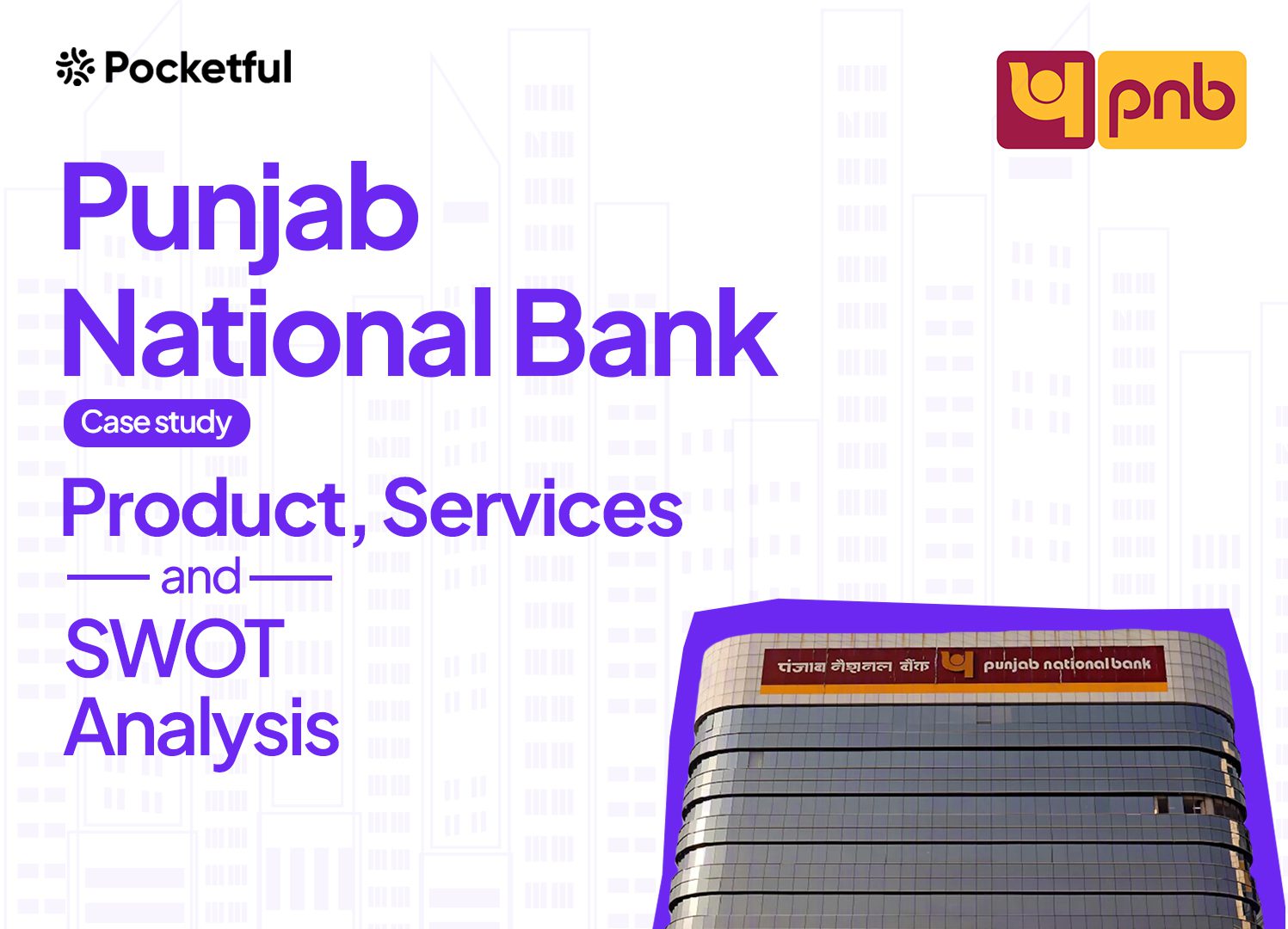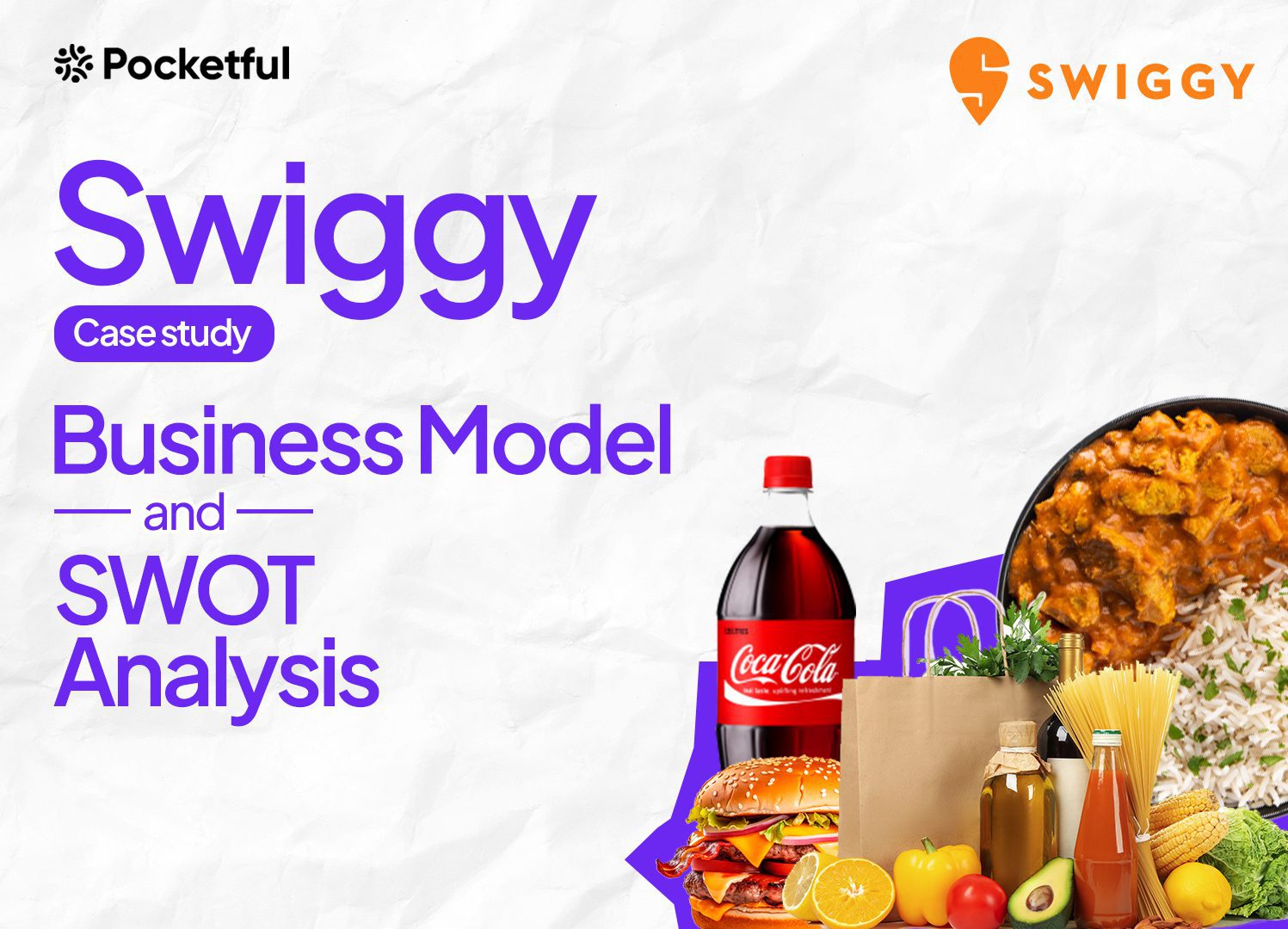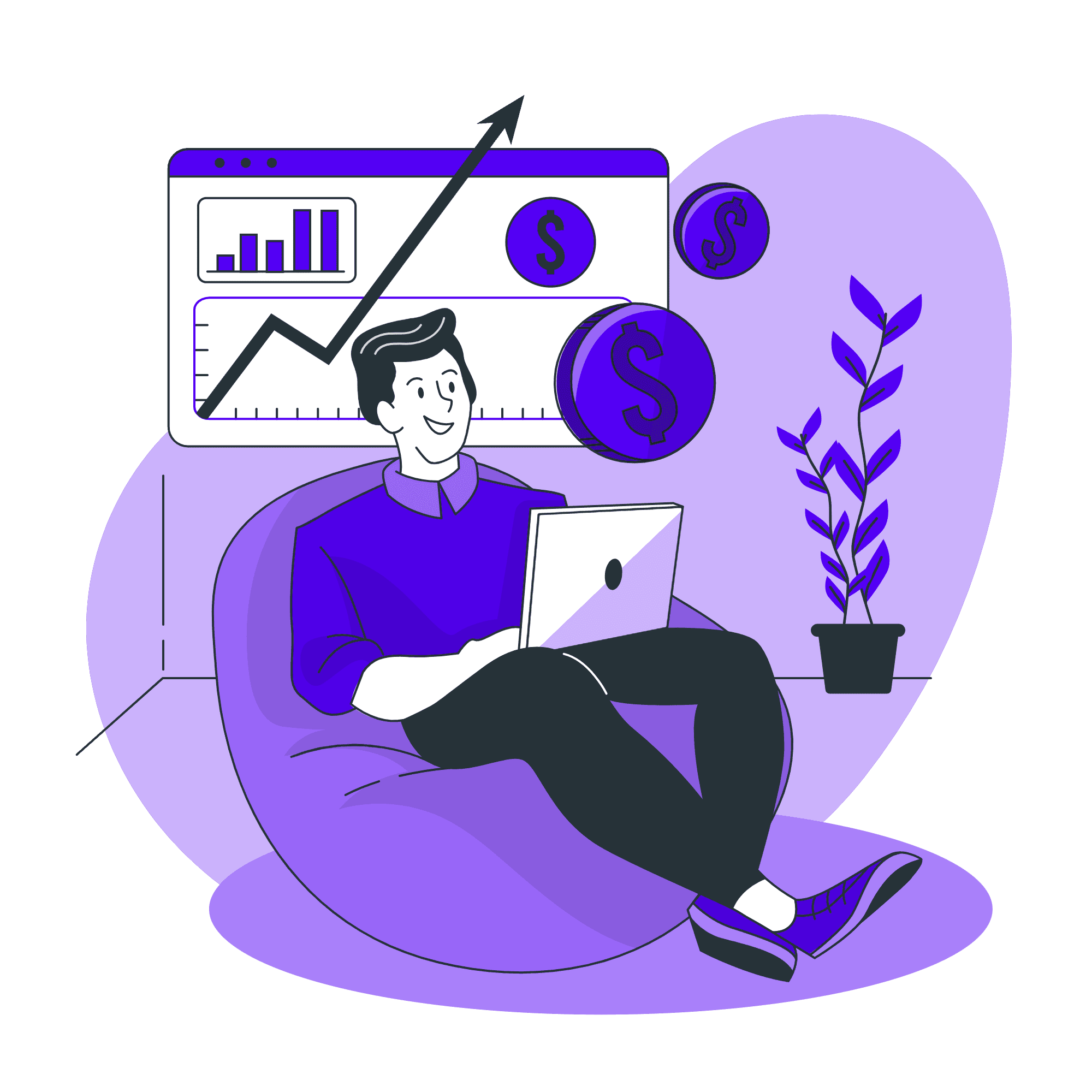Do you also consider PSU banks to be safer than private banks? Most of India thinks along these lines, but very few perform extensive research before investing their hard-earned money in them. Therefore, today’s blog will focus on a popular PSU bank, PNB, and understand its KPIs, business segments, and financials.
Overview
Punjab National Bank was established in New Delhi, India. The company’s offerings include retail and commercial banking, agricultural and international banking, and other services. Its retail and commercial banking portfolio provides debit and credit cards, corporate cash management, retail loans, deposit services, and trade finance. Its international banking portfolio includes foreign currency accounts, money transfers, letters of guarantee, world travel cards, and solutions for non-resident Indians.
Punjab National Bank also provides merchant banking services, mutual funds, depository services, insurance, and other services through the Internet. The bank is based in India but also operates in the United Kingdom, Bhutan, Myanmar, Bangladesh, Nepal, and the United Arab Emirates.
| Company Type | Public |
| Industry | Banking and Financial services |
| Founded | 1894 |
| Managing Director | Atul Kumar Goel |

Awards and Recognition
- 2016: Innovative Practices in Women’s Empowerment
- 2020: Most Innovative Project using Technology for ‘PNBOne’
- 2023: Iconic Brands of India by the Economic Times
- 2023: Employee Happiness Award
- 2023: Best CSR/Social Development Campaign for Rural India by Eggfirst Chalo
- 2023: CEO of the Year by Great Indian BFSI Awards 2023
Products and Services
- Loans: Punjab National Bank offers various types of loans for retail customers, including students. They offer personal, home, car, and gold loans.
- Credit Cards: The bank offers different types of credit cards designed to cater to the needs of its customers across categories such as traveling, dining, shopping, etc.
- Debit cards: The bank offers debit cards to allow its customers access to instant and cashless transactions.
- Insurance: The bank partners with leading insurance companies to provide a variety of insurance products, including life insurance, health insurance, and travel insurance, to its customers.
- Foreign exchange services: It offers foreign exchange services, including currency, remittances, exchange, and travel cards, to its customers who need to transact in foreign currencies.
- Digital banking: It provides various digital banking services, including Internet banking, mobile banking, and UPI, to make it easier for its customers to access and manage their accounts and financial transactions.
- Investment Product: It provides various investment products, such as mutual funds, government securities, and fixed deposits, to assist its customers in growing their wealth.
- Account: The bank provides two different accounts, i.e. Savings and Current Accounts.
- Saving Account: A basic savings account can be opened by any individual with an initial deposit of Rs 500. It also provides an ATM cum Debit Card and other advantages like free transfer of funds and free Internet banking.
- Current Account: This account is suitable for customers who perform frequent banking transactions.
Key Highlights of FY23-24
- Savings deposits increased to ₹ 4,78,880 Crore as of December’23, from ₹ 4,51,945 Crore as of December’22, registering a growth of 6.0% on a YoY basis.
- CASA ratio stands at 42.47% as of December’23.
- Net Profit for Q3 FY’24 was at ₹ 2,223 Crore, increasing by 253.4% on a YoY basis.
Market Data
Let’s have a look at some essential market data of the company:
| Market Cap | ₹ 136,977 Cr. |
| TTM P/E | 17.95 |
| ROCE | 5.86 % |
| Book Value | 82.65 |
| ROE | 3.32 % |
| High / Low | 133 / 44.4 |
| Dividend Yield | 0.53 % |
| Face Value | ₹ 2.00 |
Read Also: Hero MotoCorp Case Study: Business Model and SWOT Analysis
Financial Highlights
Income Statement
| Particulars | Mar-23 | Mar-22 | Mar-21 | Mar-20 |
|---|---|---|---|---|
| Interest Earned | 86,845.29 | 76,241.83 | 81,935.03 | 54,918.48 |
| Other Income | 12,239.59 | 12,097.66 | 12,234.91 | 9,387.65 |
| Total Income | 99,084.88 | 88,339.49 | 94,169.94 | 64,306.13 |
| Profit Before Tax | 4,861.42 | 4,594.46 | 3,782.35 | 827.00 |
| Consolidated Profit | 3,348.45 | 3,860.74 | 2,561.97 | 438.45 |
Cash Flow Statement
| Particulars | Mar-23 | Mar-22 | Mar-21 | Mar-20 |
|---|---|---|---|---|
| Cash From Operating Activities | 22,592.09 | 20,032.33 | 1,239.53 | -12,793.04 |
| Cash Flow from Investing Activities | -732.47 | -1,204.38 | -786.84 | -338.33 |
| Cash from Financing Activities | 1,274.98 | 2,031.50 | 5,415.17 | 13,591.15 |
| Net Cash Inflow / Outflow | 23,134.60 | 20,859.45 | 5,867.86 | 459.78 |
Financial Ratios
| Particulars | Mar-23 | Mar-22 | Mar-21 | Mar-20 |
|---|---|---|---|---|
| Adjusted EPS (₹) | 3.04 | 3.51 | 2.45 | 0.65 |
| Cash EPS (₹) | 3.61 | 4.15 | 2.99 | 1.45 |
| Adjusted Book Value (₹) | 85.76 | 82.22 | 81.44 | 87.74 |
| Dividend per Share (₹) | 0.65 | 0.64 | 0.17 | 0.05 |
| Cash Flow per Share (₹) | 20.52 | 18.19 | 1.18 | -18.99 |
| Free Cash Flow per Share (₹) | -0.79 | 1.06 | -21.62 | -39.80 |
KPIs
| Particulars | Mar-23 | Mar-22 | Mar-21 | Mar-20 |
|---|---|---|---|---|
| NIM (%) | 2.48 | 2.34 | 2.60 | 2.22 |
| ROE (%) | 3.32 | 4.18 | 2.98 | 0.72 |
| ROA (%) | 0.22 | 0.28 | 0.20 | 0.04 |
Shareholding Pattern
| Particulars | Dec-23 | Sep-23 | Jun-23 | Mar-23 | Dec-22 |
|---|---|---|---|---|---|
| Indian Promoter | 73.15 | 73.15 | 73.15 | 73.15 | 73.15 |
| DIIs | 13.74 | 13.80 | 13.45 | 13.52 | 12.98 |
| FIIs | 3.10 | 2.65 | 1.82 | 1.71 | 1.71 |
| Others | 10.01 | 10.40 | 11.58 | 11.62 | 12.16 |
The graph indicates a stagnancy in the shareholding pattern. This shows the trust of institutional investors.
Peer Comparison
| Particulars | Punjab National Bank | HDFC Bank | ICICI Bank | State Bank Of India | Kotak Mahindra Bank |
|---|---|---|---|---|---|
| Market cap (₹ Cr) | 1,36,922 | 11,00,185 | 7,69,544 | 6,71,666 | 3,55,003 |
| Interest Income (₹ Cr) | 1,04,688 | 2,51,764 | 1,51,348 | 4,19,802 | 53,062 |
| Net Interest Income (₹ Cr) | 39,669.81 | 1,18,710.68 | 83,184.21 | 1,77,258.81 | 32,477.35 |
| RoA (%) | 0.47 | 3.09 | 2.10 | 1.06 | 2.79 |
| Price to Earnings | 17.80 | 18.46 | 17.98 | 10.37 | 20.15 |
| Price-To-Book | 1.36 | 2.49 | 3.19 | 1.75 | 2.82 |
SWOT Analysis

Strengths
- It offers a wide range of banking services, catering to both urban and rural customers and international clients. The bank serves a diverse customer base and effectively meets their banking needs and requirements.
- The bank has a long history of providing services of utmost quality.
- The bank has created a positive reputation that distinguishes it from its competitors.
Weaknesses
- Punjab National Bank exists in a highly competitive environment, with numerous players vying for market share.
- The bank must invest in advanced technological infrastructure and offer convenient and secure online banking services to meet changing customer requirements and expectations.
Opportunities
- Punjab National Bank must display an increase in net profit margin and favorable NIM (Net Interest Margin).
- The bank should continuously monitor and evaluate its performance against established benchmarks and adjust its strategies as needed.
Threats
- In 2018, Punjab National Bank suffered from controversies such as the Nirav Modi scam, where fraudulent transactions worth $2 billion were conducted through PNB’s Mumbai branch without detection for a long time, tarnishing the bank’s reputation significantly.
- New entrants can give tough competition to the Punjab National Bank. It can impact the bank’s profitability and financial stability.
Read Also: LIC Case Study: Business Model and SWOT Analysis
Conclusion
Punjab National Bank is a public sector undertaking in India that offers a wide range of banking and financial services. It has a strong presence in various segments, including retail and commercial banking, international banking, and digital banking. The bank has experienced growth in its financial metrics and is expected to continue growing. Overall, Punjab National Bank is a reputable institution with a diverse customer base and a positive outlook.
However, it is advised that you perform your own analysis before investing your hard-earned money.
Frequently Asked Questions (FAQs)
Is PNB a private or government bank?
Punjab National Bank is a government entity public sector bank.
Who established the Punjab National Bank?
Punjab National Bank is an Indian Public sector bank, established on 19th May 1894 by Sardar Dyal Singh Majithia.
What is the book value of Punjab National Bank?
As of 25th March 2024, the per share book value of PNB is ₹ 82.65.
Who is the CEO of PNB?
Atul Kumar Goel is the current Managing Director and Chief Executive Officer of Punjab National Bank.
Which banks merged with PNB in 2020?
The Oriental Bank of Commerce and the United Bank of India (UBI) merged with PNB in 2020.





























